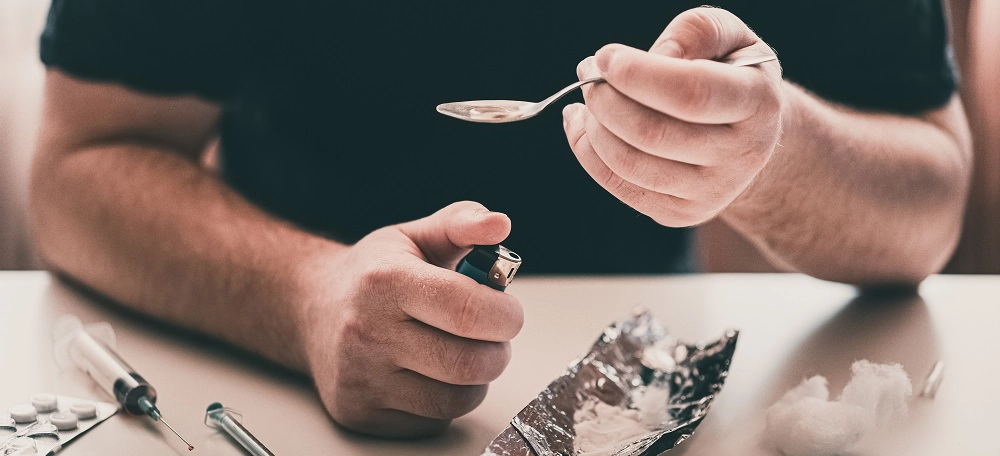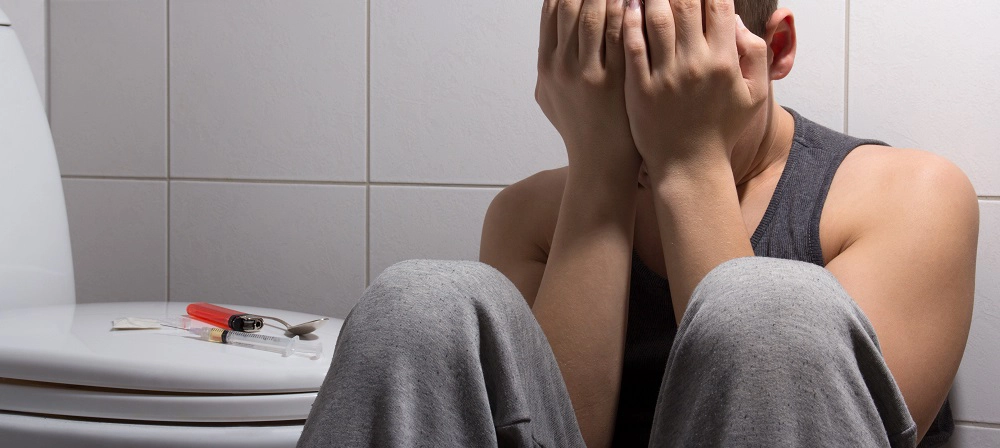Knowledge of the dangers of heroin addiction can help fast track the process of selecting a treatment option. For most people dependent on heroin, it’s hard for them to see the negative effects of abuse. If there’s anything that’s sure about heroin addiction, it’s that it’s dangerous.
Heroin addiction comes with a plethora of negative side effects that can affect your health. Still, wondering why you need heroin addiction rehab? Let the dangers of heroin addiction give you a much-needed perspective.
Fast Facts About Heroin
- Heroin is an opioid drug that is made from morphine. Unlike some other opioids, heroin has little to no therapeutic functions. Opioids are a general class of drugs that are known as pain-killers or analgesics.
- It can exist as a brown or white powder. More rarely, it exists as a dark sticky substance colloquially known as black tar heroin.
- Some common names of heroin include dope, hell dust, smack, hero, H, china white, brown, and beast, to name a few.
- International statistics prove that over 9.2 million people use heroin worldwide.
How is Heroin Used?
There are three major ways of using heroin. They exist as follows:
- Injecting: You experience the mildest effect of heroin when you inject it. Nonetheless, this form of use bears the most dangerous side effects. Injectors are more prone to diseases like Hepatitis C and HIV/AIDS. This, of course, is asides the dangerous effects that accompany heroin use.
- Smoking: You can roll up heroin in a blunt and smoke it.
- Snorting/sniffing. Some folks speedball, to reach new highs. This involves mixing heroin with crack cocaine.
How Does Heroin Make You Feel?
Anyone who has used heroin in any way will tell you they experienced a ‘rush.’ This is the euphoria, the high, that precedes a sober low. The latter is termed an ‘on-the-nod’ experience.
How you feel when you use heroin depends on how you use it. You feel the least highs and lows when you self-inject it into a vein. The highest highs and deepest lows are experienced when you snort or smoke it.
How you feel also depends on other factors like:
- Your age
- The environment you’re in
- Duration of use
- Presence or absence of a pre-existing mental illness
How Does Heroin Work?
Heroin is an opioid, and it works like one. Here’s how:
- Heroin binds to opioid receptors in the central nervous system.
- Upon binding, they repolarize the neurons (cells of the nervous system) by increasing the release of potassium ions (K+).
- A repolarized neuron is less likely to respond to signal impulses.
- They simultaneously inhibit the release of calcium ions. Without calcium, the release of neurochemicals is impossible. And without neurochemicals, impulses cannot move from neuron to neuron.

It all makes sense that it serves as a pain-killer now, doesn’t it? The effect of heroin depends on where the opioid receptors are located. Asides from physically reducing pain, it affects emotional response by acting on the brain’s anterior cingulate cortex. The details of that are way beyond the scope of our discussion.
Related article: Heroin Addiction Treatment: Dealing with Withdrawal Symptoms
The Dangers of Heroin Abuse and Addiction
The dangers of heroin addiction can be seen both in the short and long term. Here are a few:
Short-term effects
- Nausea
- Dizziness
- Heavy arms and legs
- Floating in and out of consciousness
Long-term effects
- Haphazard menstrual cycles in women
- Erectile dysfunctions in men
- Insomnia (sleeplessness)
- Constipation
- Edema and abscesses (abnormal fluid collection around tissues of the body)
A scary 80 percent of heroin users don’t just happen on heroin. Many times, they start with the misuse and abuse of professionally prescribed opioids for their conditions. These conditions can be as severe as cancer or could be as mild as deadening pain from injuries or a surgical site. The most common ones doctors prescribe are Vicodin and OxyContin.
When patients get too comfortable with the fuzzy feeling these drugs give them, they begin to misuse them. This begins the gradual transition to proper heroin use. Measures like Prescription drug monitoring programs (PDMPs) have been set in place by medical practitioners to keep patients on these drugs under constant surveillance. They track the prescribing and dispensing of these drugs and identify misuse.
Heroin addiction: The Possibility of an Overdose
Like all opioid derivatives, heroin is highly addictive. Addiction is the worst form of substance use disorder (SUD). It is a pitiful state that describes a person’s whole life revolving around the use of a drug. Such a person is incapable of existing independently.

Heroin addiction becomes a major concern when the addict develops a tolerance. At this point, more and more doses of the drug are required to reach the previous highs that lesser dozes would have elicited. This is when overdosing becomes a serious concern.
A person overdoses on heroin when enough of the drug is ingested into the body to cause a near-death experience, or death itself. When an addict overdoses on heroin, the first sign is a slowed, shallow, or even ceased breathing.
Reduced concentration of oxygen in the blood is known as hypoxia. And it’s never a good thing. The first sufferer of this condition is the brain. The increasing duration of this condition accompanies worsening effects on the brain and other parts of the central nervous system.
What To Do During Heroin Overdose Situations
So long as the overdosed patient is given immediate treatment, risks of any permanent mishaps are reduced. A common drug that is used to manage heroin overdose is Naloxone. Binding to opioid receptors in the CNS hinders and ultimately stops the action of heroin.
The dose of Naloxone administered to different patients depends on how bad the overdose was. Generally, you administer Naloxone in continuous bits, till the person starts breathing again.
What are Treatment Options for Heroin Addiction?
Just like any other addiction, there are treatment options to help you quit heroin. Heroin addiction treatment is a tough path for recovery and getting your life back. However, once complete, the feeling of freedom from the grasp of drugs like heroin is one of the world’s best feelings.
There’s no definite route to heroin addiction treatment. But here’s the first thing to know: if addiction doesn’t happen in a flash, it’d be unfair and unrealistic to expect a recovery to happen overnight.
Recovery from heroin addiction can be achieved through pharmacological or behavioural procedures.
Pharmacological Treatment
This treatment method realizes that it is suicidal to halt heroin usage suddenly. Attempting this elicits dangerous life-threatening withdrawal symptoms.
Pharmacologically, heroin addiction treatment involves administering milder forms of heroin to patients in gradually reduced doses. These drugs help in purging the body system of heroin, while simultaneously reducing body cravings.
Generally, these drugs exist in three forms.
- Agonists: They activate opioid receptors
- Partial agonists: They activate opioid receptors but elicit an attenuated response.
- Antagonists: Block these receptors and annul the effects of heroin.
As you may have figured out, some of these drugs have opposing functions. Some act as heroin-derivatives, while others act against it. Here are some common examples: Lofexidine, Methadone, and Buprenorphine.
Behavioural Treatment
These treatment measures require the attention and support that comes with an in-patient addiction treatment centre. It includes contingency management and cognitive-behavioural therapies.
With contingency management, you get a reward for putting up the good behaviour. Cognitive-behavioural therapies are more abstract. A therapist sits you down, and you both have a long talk. Attempts are made to change the way you think. Changing your thought process changes your life.
The best heroin addiction treatment procedures combine both pharmacological and behavioural options.
Conclusion
We’ve all made choices we’re not proud of. If you’re reading this, yours must be that you ventured into using heroin, and now, you want to stop abusing it. You can keep living in regret of the mistakes you’ve made, or decide to make a change.
Here, we consider heroin addiction treatment methods that can help you get your life back on track. Don’t attempt to recover on your own. With professional help, you can better manage heroin addiction withdrawal symptoms.
Here at Addiction Rehab, we offer first-class heroin addiction treatment services. Contact us to discuss your options with an expert!
Related article: The Importance of Accountability to Your Addiction Treatment Process









